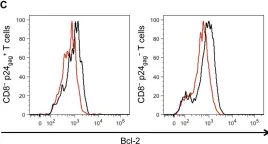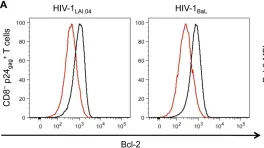Systemic lupus erythematosus (SLE) is an autoimmune disease characterized by multiple autoantibody types, some of which are produced by long-lived plasma cells (LLPC). Active SLE generates increased circulating antibody-secreting cells (ASC). Here, we examine the phenotypic, molecular, structural, and functional features of ASC in SLE. Relative to post-vaccination ASC in healthy controls, circulating blood ASC from patients with active SLE are enriched with newly generated mature CD19-CD138+ ASC, similar to bone marrow LLPC. ASC from patients with SLE displayed morphological features of premature maturation and a transcriptome epigenetically initiated in SLE B cells. ASC from patients with SLE exhibited elevated protein levels of CXCR4, CXCR3 and CD138, along with molecular programs that promote survival. Furthermore, they demonstrate autocrine production of APRIL and IL-10, which contributed to their prolonged in vitro survival. Our work provides insight into the mechanisms of generation, expansion, maturation and survival of SLE ASC.
© 2024. The Author(s).
Product Citations: 18
In Nature Communications on 1 March 2024 by Chen, W., Hong, S. H., et al.
-
Endocrinology and Physiology
In IScience on 17 March 2023 by Ritacco, C., Köse, M. C., et al.
Graft-versus-host disease (GVHD) remains a serious limitation of allogeneic hematopoietic cell transplantation (allo-HCT). While post-transplant administration of cyclophosphamide (PTCy) is increasingly used as GVHD prophylaxis, its precise mechanisms of action and its impact on graft-versus-leukemia effects have remained debated. Here, we studied the mechanisms of xenogeneic GVHD (xGVHD) prevention by PTCy in different humanized mouse models. We observed that PTCy attenuated xGVHD. Using flow cytometry and single-cell RNA-sequencing, we demonstrated that PTCy depleted proliferative CD8+ and conventional CD4+ T cells but also proliferative regulatory T cells (Treg). Further, T-cell receptor β variable region sequencing (TCRVB) analyses demonstrated that highly xenoreactive T-cell clones were depleted by PTCy. Although Treg frequencies were significantly higher in PTCy-treated than in control mice on day 21, xGVHD attenuation by PTCy was not abrogated by Treg depletion. Finally, we observed that PTCy did not abrogate graft-versus-leukemia effects.
© 2023 The Authors.
-
Immunology and Microbiology
E4orf1 Suppresses E1B-Deleted Adenovirus Vaccine-Induced Immune Responses.
In Vaccines on 15 February 2022 by Sangare, K., Helmold Hait, S., et al.
As demonstrated by the recent COVID pandemic, vaccines can reduce the burden arising from infectious agents. Adenoviruses (Ads) with deletion of the early region 1B55K (ΔE1B Ad) are currently being explored for use in vaccine delivery. ΔE1B Ads are different from Ads with deletions in early region 1 and early region 3 (ΔE1/E3) used in most Ad vaccine vectors in that they contain the Ad early region 1A (E1A), and therefore the ability to replicate. Common to almost all Ads that are being explored for clinical use is the Ad early region 4 (E4). Among the E4 genes is open reading frame 1 (E4orf1), which mediates signals through the PI3-kinase/Akt pathway that is known to modulate immune responses. This suggests that E4orf1 might also modulate immune responses, although it has remained unexplored in ΔE1B Ad. Here, we show that cells infected with an E1B55K and E4orf1-deleted (ΔE41) Ad exhibited reduced levels of phosphorylated Akt (Ser473 and Thr308)) and expressed different intrinsic innate immune cytokines from those induced in cells infected with an E4orf1-containing, ΔE1B parental Ad that exhibited elevated levels of phosphorylated Akt. Rhesus macaques immunized with a ΔE41 Ad that expressed rhFLSC (HIV-1BaL gp120 linked to rhesus CD4 D1 and D2), exhibited higher levels of rhFLSC-specific interferon γ-producing memory T-cells, higher titers of rhFLSC-specific IgG1 binding antibody in serum, and antibodies able to mediate antibody-dependent cellular cytotoxicity (ADCC) with greater killing capacity than the ΔE1B Ad. Therefore, E4orf1, perhaps by acting through the PI3-kinase/Akt pathway, limits intrinsic innate and system-wide adaptive immune responses that are important for improved ΔE1B Ad-based vaccines.
-
Immunology and Microbiology
In Cancer Cell on 13 December 2021 by Duraiswamy, J., Turrini, R., et al.
The mechanisms regulating exhaustion of tumor-infiltrating lymphocytes (TIL) and responsiveness to PD-1 blockade remain partly unknown. In human ovarian cancer, we show that tumor-specific CD8+ TIL accumulate in tumor islets, where they engage antigen and upregulate PD-1, which restrains their functions. Intraepithelial PD-1+CD8+ TIL can be, however, polyfunctional. PD-1+ TIL indeed exhibit a continuum of exhaustion states, with variable levels of CD28 costimulation, which is provided by antigen-presenting cells (APC) in intraepithelial tumor myeloid niches. CD28 costimulation is associated with improved effector fitness of exhausted CD8+ TIL and is required for their activation upon PD-1 blockade, which also requires tumor myeloid APC. Exhausted TIL lacking proper CD28 costimulation in situ fail to respond to PD-1 blockade, and their response may be rescued by local CTLA-4 blockade and tumor APC stimulation via CD40L.
Copyright © 2021 Elsevier Inc. All rights reserved.
-
FC/FACS
-
Homo sapiens (Human)
-
Cancer Research
-
Immunology and Microbiology
Quantification of T-cell dynamics during latent cytomegalovirus infection in humans.
In PLoS Pathogens on 1 December 2021 by van den Berg, S. P. H., Derksen, L. Y., et al.
Cytomegalovirus (CMV) infection has a major impact on the T-cell pool, which is thought to be associated with ageing of the immune system. The effect on the T-cell pool has been interpreted as an effect of CMV on non-CMV specific T-cells. However, it remains unclear whether the effect of CMV could simply be explained by the presence of large, immunodominant, CMV-specific memory CD8+ T-cell populations. These have been suggested to establish through gradual accumulation of long-lived cells. However, little is known about their maintenance. We investigated the effect of CMV infection on T-cell dynamics in healthy older adults, and aimed to unravel the mechanisms of maintenance of large numbers of CMV-specific CD8+ T-cells. We studied the expression of senescence, proliferation, and apoptosis markers and quantified the in vivo dynamics of CMV-specific and other memory T-cell populations using in vivo deuterium labelling. Increased expression of late-stage differentiation markers by CD8+ T-cells of CMV+ versus CMV- individuals was not solely explained by the presence of large, immunodominant CMV-specific CD8+ T-cell populations. The lifespans of circulating CMV-specific CD8+ T-cells did not differ significantly from those of bulk memory CD8+ T-cells, and the lifespans of bulk memory CD8+ T-cells did not differ significantly between CMV- and CMV+ individuals. Memory CD4+ T-cells of CMV+ individuals showed increased expression of late-stage differentiation markers and decreased Ki-67 expression. Overall, the expression of senescence markers on T-cell populations correlated positively with their expected in vivo lifespan. Together, this work suggests that i) large, immunodominant CMV-specific CD8+ T-cell populations do not explain the phenotypical differences between CMV+ and CMV- individuals, ii) CMV infection hardly affects the dynamics of the T-cell pool, and iii) large numbers of CMV-specific CD8+ T-cells are not due to longer lifespans of these cells.
-
Immunology and Microbiology
In PLoS Pathog on 1 February 2013 by Introini, A., Vanpouille, C., et al.
Fig.6.C

-
FC/FACS
-
Collected and cropped from PLoS Pathog by CiteAb, provided under a CC-BY license
Image 1 of 4
In PLoS Pathog on 1 February 2013 by Introini, A., Vanpouille, C., et al.
Fig.6.A

-
FC/FACS
-
Collected and cropped from PLoS Pathog by CiteAb, provided under a CC-BY license
Image 1 of 4
In PLoS One on 22 May 2008 by Peters, J. H., Hilbrands, L. B., et al.
Fig.4.C

-
FC/FACS
-
Collected and cropped from PLoS One by CiteAb, provided under a CC-BY license
Image 1 of 4
In PLoS One on 22 May 2008 by Peters, J. H., Hilbrands, L. B., et al.
Fig.5.C

-
FC/FACS
-
Collected and cropped from PLoS One by CiteAb, provided under a CC-BY license
Image 1 of 4



